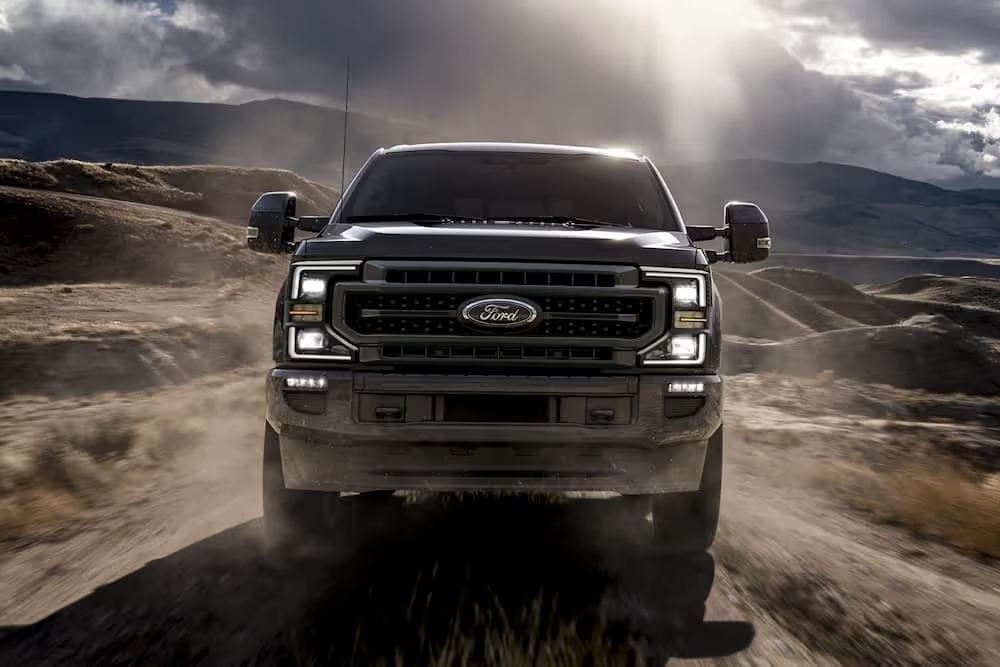Owning a vehicle involves much more than just paying the sticker price; long-term costs such as maintenance and repairs significantly influence how affordable a car truly is. For budget-conscious buyers, selecting a car with low upkeep costs can result in major financial benefits over the lifespan of the vehicle.
Some models stand out for their dependability, long-lasting performance, and relatively inexpensive repairs, making them excellent choices for those seeking cost-effective ownership.
In this guide, we’ll highlight five vehicles recognized for their low maintenance expenses and explain how car owners can trust Angels Transmission & Auto Repair for expert servicing to help keep their cars running in top shape.
When evaluating the total cost of owning a car, routine maintenance like oil changes and tire rotations must be considered, along with unexpected repairs and general wear-and-tear.
Cars that are known for reliability and low-cost replacement parts can dramatically reduce these ongoing expenses. For buyers who prioritize affordability, choosing a model with fewer repair needs allows them to allocate their resources to other important areas.
Additionally, working with a reliable service provider such as Angels Transmission & Auto Repair ensures that vehicles receive high-quality, professional care, further keeping long-term costs down.
1. Toyota Corolla
The Toyota Corolla has long been favored by drivers who value reliability and economical ownership. With an average annual maintenance cost of approximately $362, this compact sedan is known for its fuel efficiency, affordable replacement parts, and a simple design that makes servicing straightforward.
Toyota’s vast parts network and emphasis on engineering durable vehicles mean fewer breakdowns and lower repair expenses over time.
For 2025, Toyota has introduced the Corolla FX, which essentially serves as a cosmetic upgrade applied to the four-door sedan. The design leans heavily into the popular “black it out and add a spoiler” aesthetic.
While it pays homage to the 1980s Corolla FX16, it unfortunately lacks many of the performance enhancements that made the original noteworthy. The FX features shorter springs that lower the vehicle slightly, and the electric power steering has been retuned to deliver what Toyota claims is a sportier feel.
Visual changes include 18-inch satin-black alloy wheels with machined accents, a blacked-out roof, black mirror caps, black badging, and a rear spoiler. One of the key functional additions is a new 10.5-inch infotainment screen, which is standard on the FX and will be optional across the rest of the 2025 Corolla lineup.
The pricing for the 2025 Toyota Corolla starts at $23,460 and can climb to $29,325 depending on the trim and selected options. The lineup includes the following trims: LE ($23,460), SE ($24,915), Hybrid LE ($24,960), Nightshade Edition ($25,915), Hybrid SE ($27,400), FX ($27,785), XSE ($28,215), and Hybrid XLE ($29,325).
Among these, the SE sedan stands out as the most appealing choice for those looking for a sportier driving experience—at least by Corolla standards.
Its stiffer suspension setup provides improved handling over the LE and XLE trims. The SE also comes well-equipped, featuring LED headlights, 18-inch wheels, a leather-trimmed steering wheel, and an 8.0-inch touchscreen infotainment system that supports Apple CarPlay and Android Auto.
The Corolla uses a 169-hp 2.0-liter four-cylinder engine that sends power to the front wheels via a continuously variable automatic transmission (CVT).
This powertrain is shared across all hatchback models, while the sedan variant also offers a hybrid option. In testing, both the Corolla SE hatchback and the XSE sedan proved to be efficient in urban driving and stable at highway speeds.
However, acceleration is not one of the car’s strengths—getting up to speed takes time, and hard acceleration results in unpleasant engine noise that detracts from overall refinement. That said, both sedan and hatchback versions provide a smooth ride and do a good job isolating occupants from road imperfections.
Their improved body control also makes them more agile than past models. The SE and XSE trims further enhance driving dynamics with a sport-tuned suspension, and the XSE gains additional traction and grip from its larger 18-inch wheels (other models use 15- or 16-inch wheels).
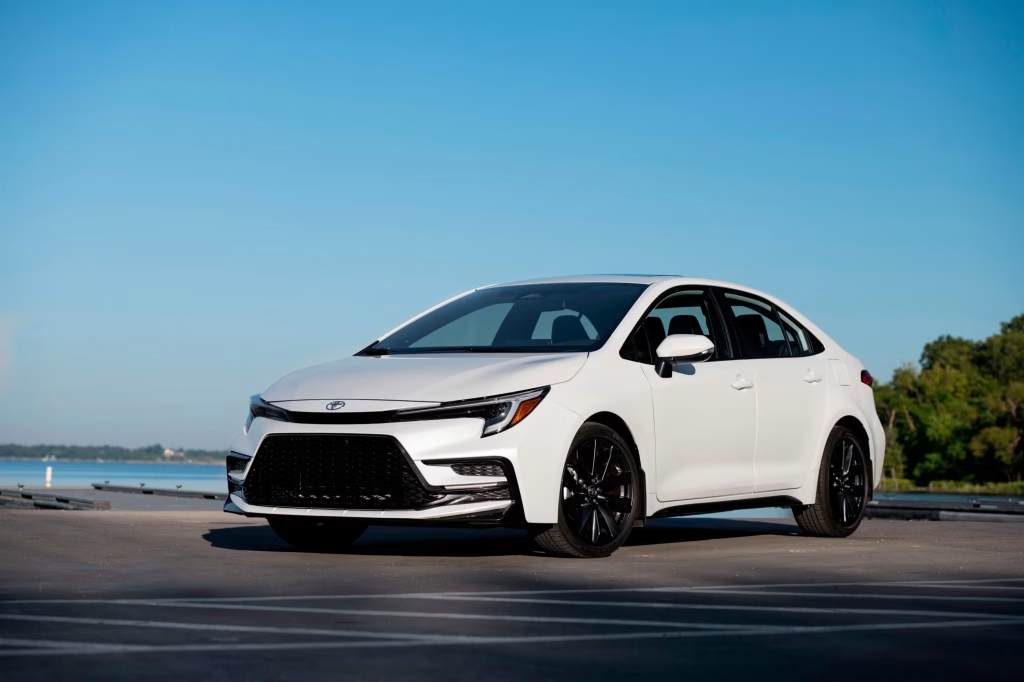
Still, when compared with more dynamic competitors like the Mazda 3 or Honda Civic, the Corolla’s steering feels merely adequate. In braking tests from 70 mph to a complete stop, neither body style performed particularly well, requiring between 174 and 183 feet to stop. However, both delivered consistent and natural brake pedal feedback.
In terms of acceleration, the all-wheel-drive hybrid version clocked a 0–60 mph time of 9.0 seconds in our testing, which is on the slower side. The last hatchback model we tested did better, reaching 60 mph in 8.3 seconds. The top speed of the hybrid is electronically limited to 107 mph, while the hatchback can reach up to 111 mph.
Fuel efficiency is another strong point for the Corolla. In addition to the already economical standard four-cylinder engine, the hybrid sedan models are especially frugal.
According to EPA estimates, the front-wheel-drive hybrid achieves 53 mpg in the city and 46 mpg on the highway. The all-wheel-drive hybrid is slightly less efficient, rated at 51 mpg city and 44 mpg highway. The non-hybrid 2.0-liter gasoline engine offers up to 41 mpg on the highway.
During real-world testing, the all-wheel-drive hybrid managed 40 mpg on a 75-mph route, and the gas-only XSE sedan achieved 41 mpg. The Corolla hatchback is EPA-rated at up to 32 mpg city and 42 mpg highway. In testing, our hatchbacks delivered 40 mpg and 36 mpg respectively. For more details, refer to the EPA’s official website.
Inside the cabin, the Corolla sedan and hatchback share a clean and streamlined dashboard design, finished with soft-touch materials that give the interior a more upscale feel. Most models come with passive keyless entry and push-button start, and higher trims offer upgrades like ambient lighting, dual-zone climate control, and heated front seats.
If rear passenger comfort is a priority, the sedan is the better option thanks to its noticeably larger rear-seat legroom. The Corolla hatchback offers 18 cubic feet of cargo space behind the rear seats, although in our testing it only fit two carry-on bags.
An Enhanced Cargo Space option—offered at no extra cost—expands this capacity to 23 cubic feet by removing the spare tire in favor of a tire repair kit. The sedan, with its 13-cubic-foot trunk, was able to hold eight bags during testing.
However, when it comes to small-item storage and interior cubbies, both body styles trail behind more spacious rivals. That said, they do include practical touches like a center console tray and a storage bin under the armrest to help improve everyday usability.
2. Honda Civic
The Honda Civic is another reliable option in the compact car category. It is recognized for its long lifespan and low repair needs, with an average annual maintenance cost of around $368. It features excellent resale value, dependable engine performance, and strong fuel economy.
Honda’s design philosophy, which includes minimizing the number of moving parts, contributes to lower wear and tear and ultimately results in fewer mechanical issues.
The 2025 Honda Civic is a practical small car that also carries a hint of excitement. Drivers will enjoy the Civic’s sharp and responsive handling, while passengers will appreciate the cabin’s spacious layout and upscale materials. It’s not a perfect vehicle, but as a compact car, the Civic remains one of the top choices in its segment.
Among its strengths are a roomy and upmarket interior, engaging handling, excellent fuel economy, and an intuitive infotainment system. On the downside, the base engine feels underpowered, road noise can be intrusive, and the Civic’s price tag is on the higher end for its class.
Several updates have been made for the 2025 model year. These include refreshed interior and exterior styling, a simplified trim lineup, and the discontinuation of the optional turbo-four engine. The 2025 Civic continues to seat up to five passengers and delivers an EPA-estimated 31-32 mpg in the city and 39-41 mpg on the highway.
All models are front-wheel drive and come standard with a 150-horsepower engine. This high rating is based on an analysis of 24 data sources, including performance, safety, reliability, and value metrics.
In terms of pricing, the Civic is positioned just below the 2025 Mazda Mazda3, which starts at $23,950, with the Civic itself ranging from $24,250 to $26,250. Other competitors include the Hyundai Elantra, Kia K4, Subaru Impreza, and Toyota Corolla, all priced slightly below or close to the Civic.
The U.S. News rating system reflects a combination of expert analysis and hard data. The 2025 Civic scores a 9.2 out of 10 overall, with individual category ratings of 8.0 for performance, 10.0 for fuel economy, 7.8 for interior, 8.6 for value, and 9.5 for safety. The Civic also receives an 82 for quality and reliability from J.D. Power and a critics’ rating of 9.3.

Driving the 2025 Civic is a balanced experience, offering a mix of fun and functionality. Its steering is precise and light enough for navigating tight spaces, while remaining stable and controlled at higher speeds. Though the suspension is slightly firm—resulting in occasional dips in ride comfort—it still delivers an overall smooth experience.
The standard powertrain consists of a 150-horsepower four-cylinder engine paired with a continuously variable automatic transmission (CVT). While this setup isn’t particularly quick, it handles daily driving with ease. The CVT shifts seamlessly and supports the Civic’s impressive fuel efficiency.
For those seeking a more dynamic option, the Civic Si comes equipped with a 200-horsepower turbocharged four-cylinder engine and a six-speed manual transmission. This variant offers quicker acceleration and more direct driver engagement, thanks to its responsive gear changes and upgraded performance tuning.
3. Hyundai Elantra
With its combination of sleek design and wallet-friendly ownership, the Hyundai Elantra is an attractive choice for many. It offers an average annual maintenance cost of roughly $452 and is backed by a generous warranty, dependable performance, and solid fuel efficiency.
Hyundai’s industry-leading warranty often covers major repairs during the initial years of ownership, providing peace of mind and reducing unexpected costs.
The 2025 Hyundai Elantra comes with a number of strengths that make it a compelling choice in the small sedan segment. Among its highlights is a generous list of both standard and optional features that provide strong value for buyers.
Interior space is also a standout, offering roomy seating even in the back—something that’s not always guaranteed in this class. Drivers who opt for the Elantra N Line trim will enjoy a noticeable boost in sporty performance, making it one of the more engaging options in the lineup.
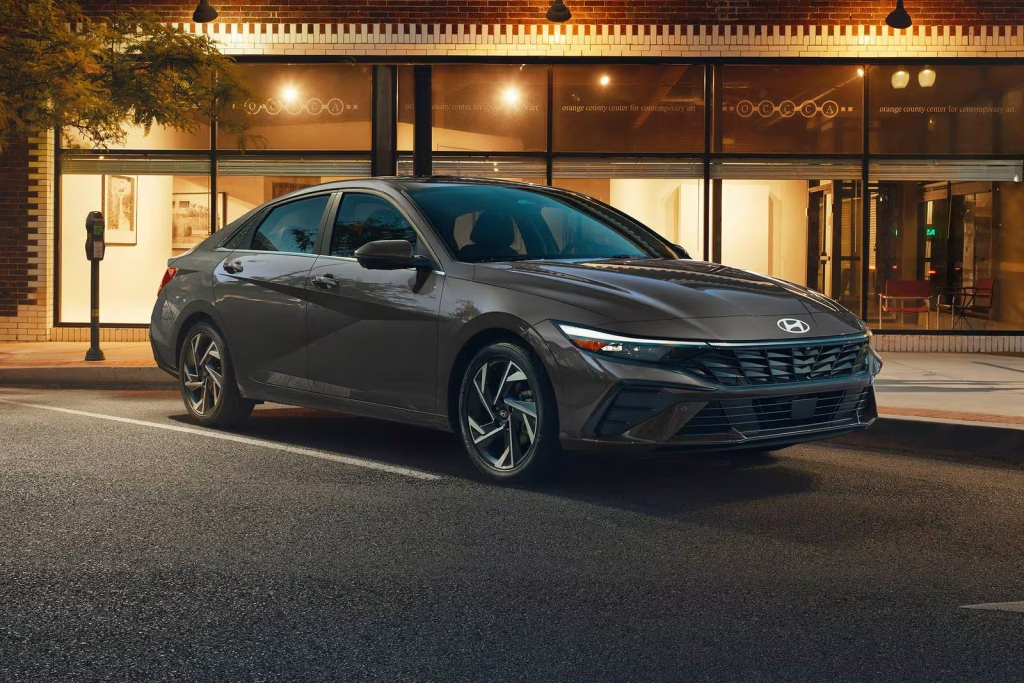
That said, not everything about the Elantra is a home run. The base engine delivers underwhelming acceleration, which may leave some drivers wanting more power for highway merging or spirited driving.
Additionally, while the interior design is modern and functional, some of the materials used feel a bit cheap, particularly when compared to rivals with more upscale finishes. Wind noise at higher speeds is also an issue, as the cabin doesn’t isolate occupants from exterior sound as effectively as it could.
For 2025, Hyundai has made adjustments to the trim level lineup, giving buyers more refined options across the board. This model continues as part of the seventh-generation Elantra, which was originally introduced for the 2021 model year. Despite being categorized as a compact sedan, the Elantra feels surprisingly spacious inside. Even taller adults will find the rear seat accommodating.
The car also stands out with its bold, distinctive styling and long list of features that give you plenty of value for the price. Hyundai’s strong warranty coverage adds even more appeal. With options ranging from the efficient Elantra Hybrid to the high-performance Elantra N, this small sedan offers a well-rounded package with something for nearly every type of driver.
4. Subaru Outback
Drivers who need an all-weather, practical vehicle may gravitate toward the Subaru Outback, which balances utility with affordability. It carries an average annual maintenance cost of approximately $657.
Its key features include all-wheel drive, a spacious interior, and a long-lasting build. Subaru’s commitment to producing rugged and reliable vehicles helps reduce the frequency of repairs, even under demanding conditions.
The Subaru Outback is a hybrid – but not in the way you might think. There’s no electrification going on in this rugged 4×4. No, the Outback is a hybrid in the sense that it mixes estate car and family SUV elements. In other words, it sits between two car categories.
The core shape is that of an estate car (hence we classify it as such), but every Outback gets off-road-ready features, including all-wheel drive, plenty of plastic cladding, and a lofty ride height.
Direct rivals are rather hard to come by nowadays, but the rival Citroën C5 X mixes SUV and estate characteristics in a similar way – although that gets front-wheel rather than four-wheel drive.
If you’re leaning more towards an estate car, the Skoda Superb Estate and VW Passat are worth a look. At the SUV end, you have the Land Rover Discovery Sport and Toyota RAV4, for example. Does the Subaru Outback represent the best of both worlds? Read on to find out how we rate it against key rivals.
If you’re looking for genuine all-weather abilities, tonnes of safety technology, and lots of interior practicality, the Subaru Outback has plenty going for it. It’s a sensible choice for private buyers thanks to its reasonable buying costs for the entry-level version and decent resale values.
It’s not the most pleasant car to drive, though, and high emissions count against it as a company car choice. It offers impressive safety tech, good residual values, and excellent traction in difficult conditions. However, the ride could be smoother, it needs more power, and the handling leaves much to be desired.
The best price for a new Outback starts from £37,899, with estimated monthly payments from £544. Leasing deals are available starting at £509 per month. Among the range, the Subaru Outback 2.5i Limited 5dr Lineartronic is highlighted, with a recommended retail price of £40,495.
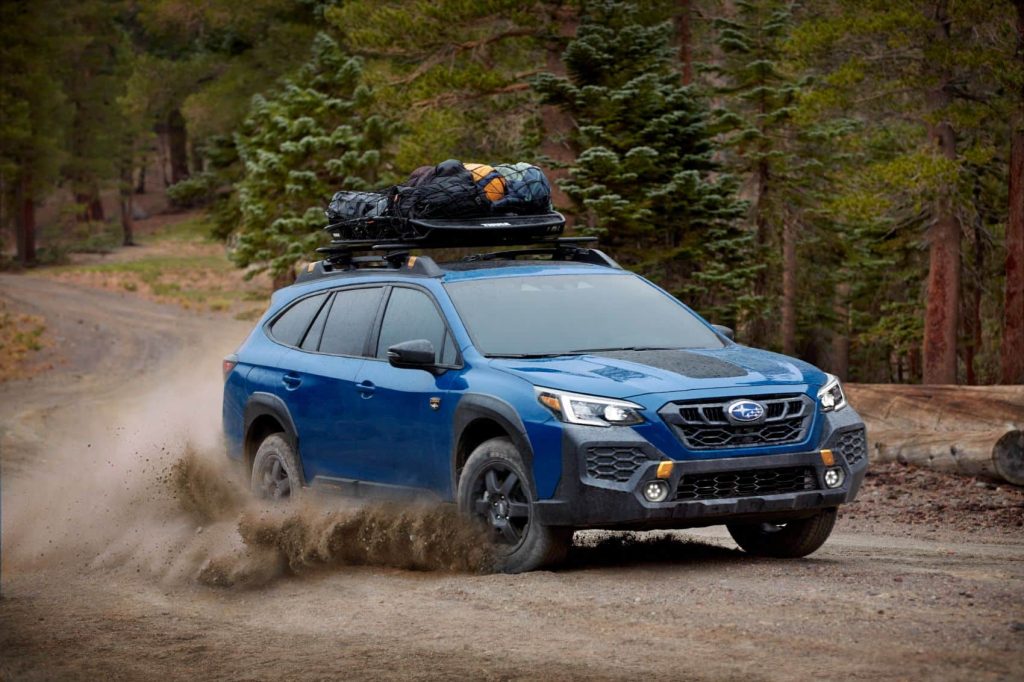
When it comes to performance and driving, the Outback offers a settled high-speed ride, a refined CVT automatic gearbox, and great off-road ability. However, it suffers from sluggish performance—especially on fast roads—a firm low-speed ride, and uninspiring handling.
Every Subaru Outback gets the same engine: a 167bhp 2.5-litre petrol paired with a CVT gearbox. This setup results in a 0-60mph time of 10.2 seconds.
The Outback feels responsive and quick enough when being driven around town, but on faster roads, it demands a heavy right foot, and even then, performance proves weak. Many rivals, including the entry-level Skoda Superb Estate, get up to speed more quickly and with less effort.
On the plus side, putting your foot down is a less loud and unrefined affair than in many other CVT-equipped cars (the Honda HR-V, for example). Subaru has programmed in artificial steps that reduce power briefly to give the impression that a gear change has been made.
This brings down the revs, making it a bit more peaceful and akin to a non-CVT automatic gearbox. The Outback is easy to drive, with light steering that makes low-speed manoeuvres a cinch.
The steering is vague, though, and nowhere near as precise during cornering as the steering in the BMW 3 Series Touring. Grip levels could be better, and the car howls in protest if you try to push it. Plus, by estate car standards, there’s a lot of body lean.
The four-wheel-drive system does what it says on the tin, providing excellent traction in all situations. That’s good news for caravan owners who wish to get out of a muddy field. The 2,000kg towing limit for a braked trailer is good, but it’s not the best tow car in its class.
The brakes are strong and very easy to modulate for making smooth stops. Sadly, ride quality isn’t the Outback’s strongest suit. It settles down a bit once you’ve built up some speed, but it’s not as supple as it should be, given its jacked-up suspension and relatively small 18in alloy wheels.
The trade-off would be that the Outback is one of the most rugged estate cars off-road, with better ground clearance than most to clamber over obstacles. Its low levels of suspension noise help you feel confident that you’re not going to break it while driving over rutted terrain.
Refinement is decent during ordinary driving too. There’s not much road noise at a cruise, and the engine is reasonably muted when you’re not demanding a lot from it. The only gripes are wisps of wind noise from around its rather upright windscreen and large door mirrors, and a rather abrupt engine start-stop system.
5. Ford F-150
For those in search of a dependable pickup truck, the Ford F-150 delivers solid performance and manageable maintenance expenses. With an average annual maintenance cost of around $788, the F-150 is built with durable components and offers a variety of configurations to suit different needs.
Its widespread popularity means that parts are easy to find and reasonably priced, which helps keep repair costs under control.
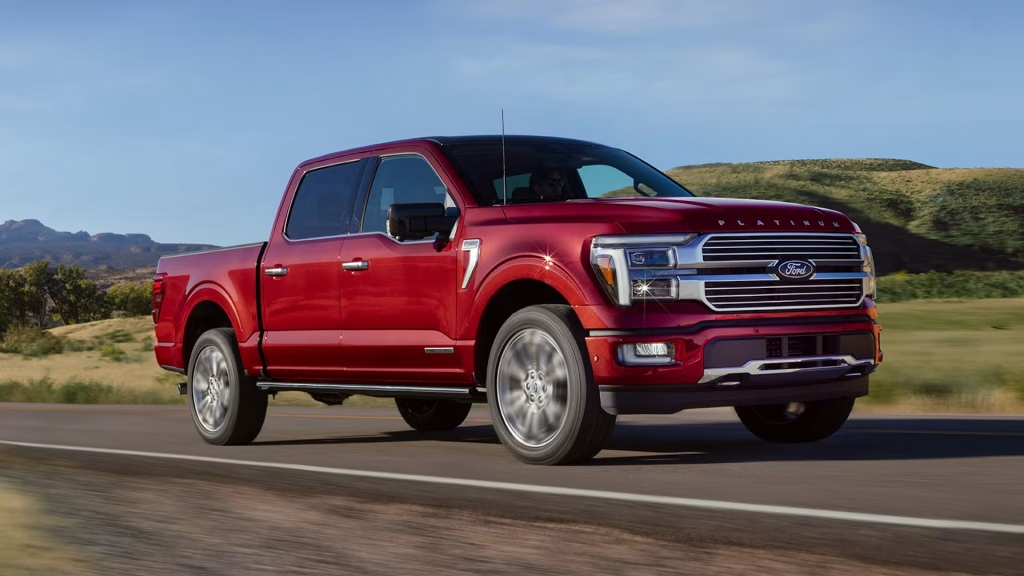
The specific year of these estimates may vary depending on when the data was collected, but they generally reflect averages across several model years. Most estimates are based on vehicles produced between 2015 and 2022, as these models have widespread ownership and well-documented maintenance histories.
Purchasing a new vehicle is an exciting milestone. With so many makes and models on the market, there’s a lot to consider. Beyond the asking price, you should take into account factors like fuel efficiency, safety and reliability ratings, resale value, insurance costs (remember insurance!), warranty coverage, and more.
Amid the thrill of shopping for a new car, one crucial aspect that often goes unnoticed is the cost of maintaining the vehicle over time.
Cars That Have High Maintenance Cost
Maintenance expenses can vary widely depending on the vehicle’s make and model. It’s easy to assume that luxury vehicles with high price tags would also come with equally high maintenance costs—and while that’s generally true, some of the most expensive vehicles to maintain may still surprise you.
Based on CarEdge data analyzing the average 10-year maintenance costs for 164 vehicle models, we’ve compiled a list of the top 10 cars and trucks with the highest maintenance expenses.
The models are ranked from most to least expensive in this top group. To showcase a wide range of manufacturers, the list includes only the most costly-to-maintain model from each brand.
Each entry includes the vehicle’s make and model, its average maintenance cost over ten years, the probability it will need a major repair (defined as $500 or more) during that time, and its rank out of the 164 models analyzed. It’s worth noting that some brands have several models with high maintenance costs, though only one per brand is listed here.
1. RAM 2500–5500
Topping the list is the RAM 2500–5500, with a 10-year maintenance cost ranging from $25,134 to $25,844. The chance of a major repair over that time is a staggering 79%, placing it at rank 1.
These full-size heavy-duty trucks are built for serious towing and hauling, but that performance comes with the highest maintenance costs of any vehicle studied—exceeding even high-end models like the Porsche Cayenne and BMW X6.
Already a standout in the heavy-duty truck segment, the Ram 2500 receives a comprehensive refresh for the 2025 model year. First introduced in 2019, this latest iteration brings changes across the board, including exterior styling updates, interior refinements, enhanced tech features, and revised powertrains.
The Ram 2500 continues to be offered in a wide range of trims and configurations, making it adaptable to various needs. It competes directly with other heavy-duty trucks such as the Chevrolet Silverado 2500 and the Ford F-250 Super Duty.
Among the most notable updates for 2025 are a redesigned front fascia that gives the exterior a fresher look, and significant improvements to the interior, including upgraded infotainment systems and tech amenities.
More driver assistance features are now standard across the lineup, improving safety and convenience. Perhaps most significantly, Ram has made its high-output turbodiesel engine available in the 2500, expanding performance capabilities that were previously exclusive to the larger 3500 model.
The Ram 2500 was already a favorite among heavy-duty trucks, and these updates address many of the previous criticisms. The excellent Cummins turbodiesel engine is now paired with a modern eight-speed automatic transmission, finally delivering the drivability, capability, and efficiency that drivers have been asking for.
It’s also encouraging to see Ram offer the same engine configurations across both the 2500 and 3500 models, removing the restriction that previously reserved the most powerful variant for only the larger truck.
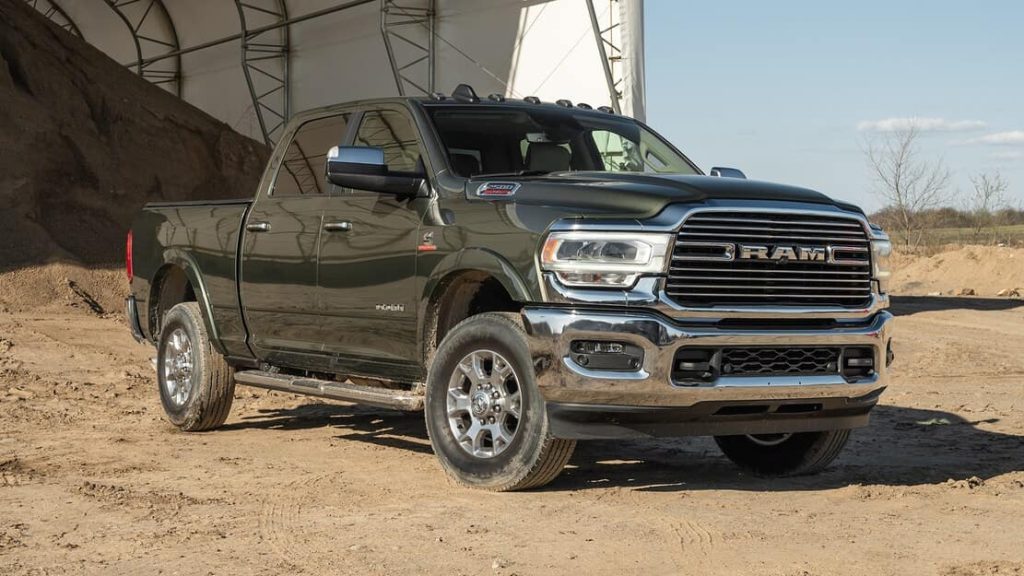
In terms of technology, the Ram 2500 was already well-equipped, but 2025 models raise the bar with more advanced digital displays and faster processing power.
The addition of a co-pilot touchscreen for the front passenger further enhances the truck’s utility, particularly for those who use it as a mobile workspace. With these improvements, the Ram 2500 looks poised to remain at the top of the heavy-duty truck rankings, maintaining its reputation as both a hardworking and comfortable vehicle.
Under the hood, significant performance upgrades come into play for 2025. The high-output 6.7-liter Cummins I-6 turbodiesel, once limited to the 3500, is now available in the 2500 as well. This engine generates 430 horsepower and a massive 1,075 lb-ft of torque, paired with a new eight-speed automatic transmission.
Ram assures that the transmission can handle the engine’s full torque load even in first gear, offering improved capability from the get-go. This is the sole diesel option for the 2025 lineup—there are no lower or higher output variants.
Additionally, the 2500 continues to offer a 6.4-liter gasoline V-8, now producing 405 horsepower (a slight reduction from the previous 410 hp) and 429 lb-ft of torque. It also pairs with an eight-speed automatic transmission, with rear-wheel drive standard and four-wheel drive available.
2. Ford F-250 – F-550 Super Duty
Next is the Ford F-250 – F-550 Super Duty, with a 10-year maintenance cost between $14,841 and $15,479 and a 44% chance of a major repair, ranking it second.
After seven Ram models, this Ford heavy-duty lineup comes in as the next most expensive. Despite its maintenance costs, it remains a favorite in commercial and industrial sectors for its rugged performance.
The 2022 Ford F-550 remains unchanged from its 2021 iteration when it comes to GVWR (Gross Vehicle Weight Rating), which is determined by the specific payload package selected for the truck.
Buyers can choose the GVWR that best suits their needs from the following options: 17,500 pounds, 18,000 pounds, 19,000 pounds, or 19,500 pounds.
Understanding the weight and payload capacity of the 2022 Ford F-550 begins with knowing your GVWR, which represents the maximum allowable total weight of the truck, including all modifications and cargo.
To determine how much you can safely load or haul around areas like Chicago and Madison, you must subtract the curb weight from the GVWR.
For models equipped with the 7.3L gas engine, the F-550 starts with a base curb weight of 6,641 pounds. Models outfitted with the 6.7L diesel engine have a starting curb weight of 7,390 pounds. These figures will increase depending on how the vehicle is equipped and configured.
The maximum payload capacity for the Ford F-550 can reach up to 12,750 pounds. However, the exact payload capability varies based on how the truck is built. To achieve the highest payload capacity, drivers should select a 4×2 model with rear-wheel drive, a 169-inch wheelbase, and the high-capacity payload package.
When it comes to GCWR (Gross Combined Weight Rating), the total permissible weight of the truck, its cargo, and a trailer is influenced by both the selected engine and the axle ratio.
This metric is critical for anyone planning to tow heavy loads. For Super Duty trucks equipped with the 7.3L gas engine and an axle ratio of 4.88:1, the maximum GCWR is 30,000 pounds. For those opting for the 6.7L diesel engine, GCWR tops out at 43,000 pounds.
Towing capacity for the 2022 Ford F-550 also depends on GCWR and the chosen towing setup. Both gas and diesel models can tow up to 18,500 pounds using a conventional hitch.

However, switching to a 5th-wheel or gooseneck towing configuration significantly boosts those numbers. With the diesel engine, towing capacity increases to 31,600 pounds, while the gas engine can manage up to 20,400 pounds using the same configuration.
Engine options for the 2022 Ford F-550 are carried over without changes. Buyers have the choice between two powerful V8 engines: a 7.3L V8 gasoline engine that produces 350 horsepower and 468 lb-ft of torque, and a 6.7L V8 diesel engine that delivers 330 horsepower along with an impressive 825 lb-ft of torque.
Both engines come mated to a TorqShift 10-Speed SelectShift Automatic transmission, ensuring smooth performance and control regardless of the application.
3. Chevrolet Silverado 2500HD–3500HD
In third place is the Chevrolet Silverado 2500HD–3500HD, with a 10-year cost between $14,644 and $14,686 and a 43% chance of needing a major repair. This truck is popular for its strong towing capabilities and roomy interior. However, owners may face minor issues over time, such as infotainment glitches or transmission hesitation.
The 2025 Chevrolet Silverado 2500HD stands as the middle ground between the 1500 pickup and the high-capacity 3500HD. When properly equipped, it can tow more than 22,000 pounds, making it a solid choice for hauling large trailers that would be a challenge for the 1500.
This capability places the 2500HD in an ideal position for those needing substantial towing power without stepping up to the 3500HD. Additionally, it offers a more affordable option and delivers a smoother ride compared to the 3500HD.
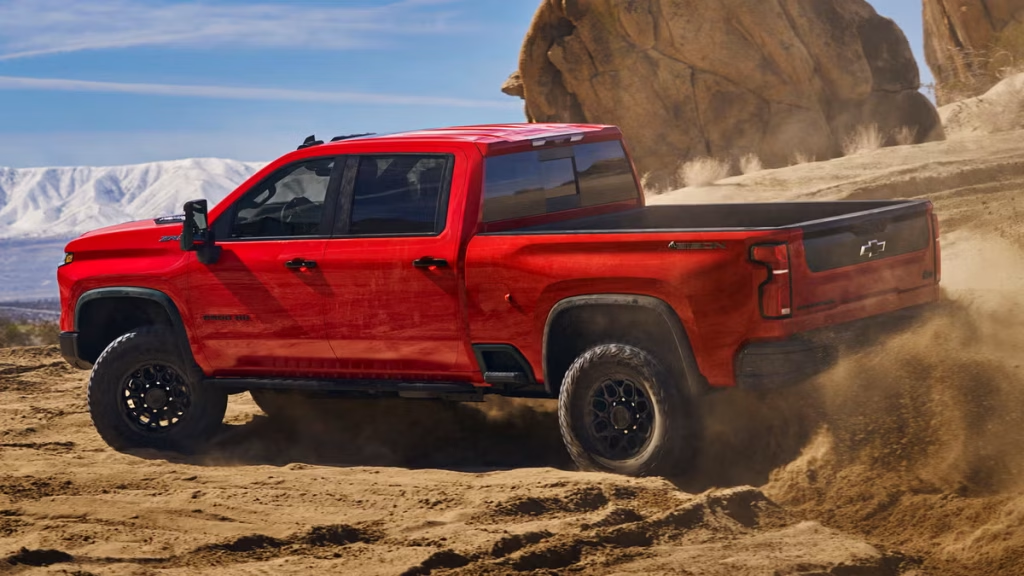
New for 2025, the Silverado 2500HD introduces a Trail Boss off-road package available for the LT and LTZ trims, further enhancing its versatility.
While the 2500HD shines with its stout power, quick acceleration, and spacious, high-tech interior, it doesn’t quite match the best-in-class payload ratings and has a high, broad hood that can limit forward visibility. Still, the Silverado 2500HD remains a strong contender in the heavy-duty truck segment, offering a balance of capability and comfort.
4. GMC Sierra 2500HD–3500HD
The GMC Sierra 2500HD–3500HD ranks 4th, with a 10-year cost of $13,029 to $13,095 and a 38% likelihood of a major repair. These trucks, like the Silverado, are often subjected to heavy loads and tough conditions. As a result, their engines, transmissions, suspensions, and brakes take more wear, leading to higher upkeep costs over time.

The GMC Sierra 2500HD is a robust and capable heavy-duty truck designed to handle tough tasks while offering a comfortable and refined driving experience. Positioned between the lighter-duty Sierra 1500 and the maximum-capacity Sierra 3500HD, the 2500HD is perfect for those who need serious towing and payload capacity without the extreme heft of the 3500HD.
5. Jeep Gladiator
At rank 5 is the Jeep Gladiator, with a 10-year maintenance cost of $11,803 and a 36% chance of needing a major repair. Known for its unique blend of off-road prowess and pickup utility, it features removable doors and top and even a fold-down windshield for those who want a classic Jeep experience during rock crawling or outdoor adventures.
The Jeep Gladiator is a unique and rugged midsize pickup truck that combines the off-road prowess Jeep is known for with the functionality of a pickup.
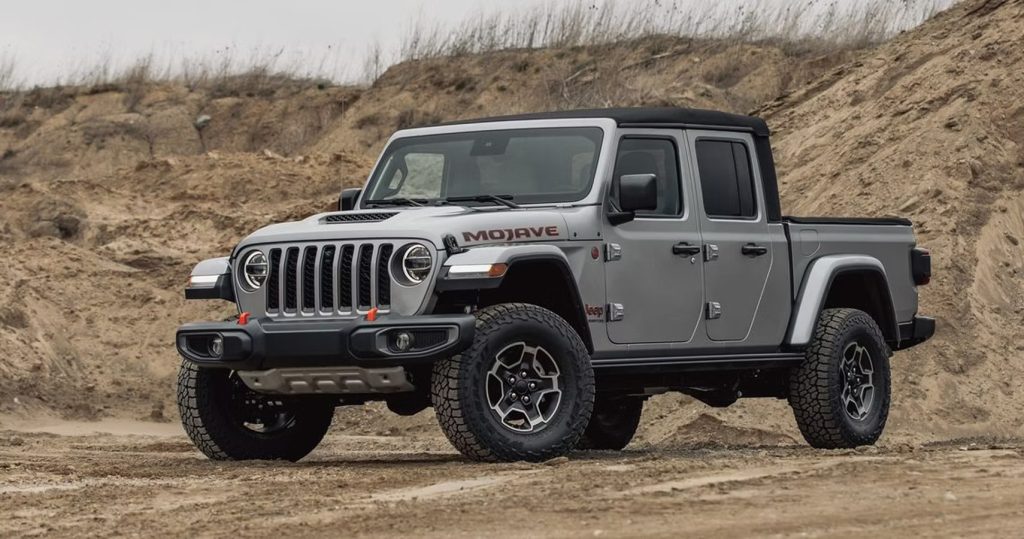
It stands out in the market as one of the few trucks that offers true off-road capabilities straight from the factory, thanks to its Jeep DNA, while also providing the utility and convenience of a bed for hauling gear, equipment, or anything else you need.
The Jeep Gladiator is a highly capable, adventure-ready pickup that blends Jeep’s legendary off-road capabilities with the utility of a truck. Whether you’re tackling off-road trails, hauling gear, or simply cruising around town, the Gladiator offers a unique combination of versatility, power, and Jeep’s trademark fun-to-drive experience.
It’s ideal for those who want a pickup that stands out from the crowd and is built to take on any terrain, while also offering the practicality of a pickup bed for daily tasks.

